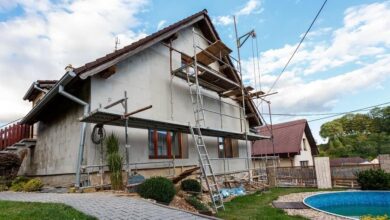Why is Prefabricated Construction Good?

Over recent years prefabricated, or ‘prefab’, construction has grown enormously in popularity within the UK. But what exactly is it, and why is it considered such a good method of building? In this article, we’ll examine what prefab construction involves, weigh up its major advantages and disadvantages, look at some of the latest innovations, and understand why it is becoming the construction method of choice for many projects.
What is Prefabricated Construction?
Prefabricated construction, often shortened to ‘prefab’, is a building method whereby key structural and component elements are manufactured offsite in a specialized facility, then transported and assembled onsite to complete the overall building.
Common types of prefab buildings include things like prefab buildings, portacabins, modular homes, paneled systems, and pods.
The main distinction of prefab versus traditional construction is a shift away from largely building structures onsite piece-by-piece, towards assembling pre-made modular components. This offsite manufacture and onsite assembly process provides many advantages, but also some limitations to be aware of.
What Are The Advantages Of Prefabricated Construction?
Several compelling benefits make prefab an increasingly popular method of building:
Speed Of Construction
As components are pre-made offsite in parallel, onsite build time is vastly reduced. Modules can be installed and assembled rapidly, allowing faster project completion. This cuts down on overall construction schedules.
Cost efficiency
Factory manufacturing benefits from economies of scale and optimized processes. This can lower costs by up to 20% compared to an equivalent onsite building. Less onsite labor is also required.
Quality control
Working in a controlled factory environment allows for stricter quality control and compliance checks during production. This can deliver more reliable build quality and consistency.
Weather resilience
Unaffected by weather onsite, prefab manufacturing can continue year-round. Components also have fewer issues like dampness or exposure once assembled.
Sustainability
Prefab production waste is minimized compared to onsite activity. Components can also integrate sustainability features like solar power, natural light, and ventilation.
Flexibility
Prefab buildings allow very flexible and customizable options. Modules can be expanded, shrunk, reconfigured, and modified to suit specific space and layout needs.
Minimal disruption
With prefab, most construction work happens offsite at the factory. Onsite it’s just the assembly of the modules, so local disruption is greatly reduced.
What are the potential disadvantages?
Despite its many benefits, there are also some limitations to consider with prefabricated construction:
Large modules need special transport
Difficulties moving large prefab sections from factory to site means locations need good transport access. Outsized loads may require special permits.
Design constraints
Prefab requires designing for modular sizing and assembly from the outset. Some degree of custom architectural design freedom is lost.
Upfront design input
More upfront investment in design specs and pre-planning is needed. There is less flexibility to make changes later in the process.
Supplier dependence
Relies heavily on the prefab supplier’s capabilities and capacities. Timescales could be impacted if they become overloaded.
Long lead items
A supplier’s manufacturing and transport scheduling must align with overall timescales. Delays could arise if prefab elements are not ready.
Site prep is still required
While minimal, good site preparation is still required including access, foundations, and interconnections between modules.
Latest innovations in prefab construction
Constant innovation in offsite manufacturing and modular construction is further enhancing the benefits of the prefab build process:
Automation and robotics
Automated manufacturing systems like robot welding are boosting productivity and quality in prefab production.
Digital design
New digital modeling and design tools help optimize modular configurations and simulate prefab assembly before physical builds commence.
Sustainability
Prefab now incorporates more sustainable materials like cross-laminated timber and recyclable composites. Plus buildings can be designed to be net zero or passive.
Customization
Design libraries with set configurations, textures, fittings, and accessories enable easy customization of repetitive modular elements.
Smart technology
Prefab buildings are integrating smart tech including sensors, automation, access control, and data analytics for greater efficiency.
Smaller modules
New lighter and smaller prefab components make transportation easier and enable faster onsite assembly.
Uses of prefabricated construction
Prefab building methods are proving ideal for many scenarios including:
- Housing – private and social, including apartments and communities
- Educational facilities – schools, universities, nurseries
- Offices and commercial premises
- Healthcare buildings like hospitals, health centers, and dentists
- Temporary facilities like construction site cabins and event venues
- Disaster relief programs providing emergency shelter and facilities
- Industrial units and warehouses
- Hospitality spaces like hotels and apartment blocks
- Retail spaces and shopping centers
- Leisure facilities like sports centers and swimming pools
Almost any permanent or temporary building can benefit from using prefab construction techniques.
Is prefabricated construction the future?
With its myriad benefits and increasing adoption globally, prefab seems set to form a major part of the future of the construction industry:
Growing demand
The need for affordable, sustainable, and rapidly deployable buildings is driving demand for prefab solutions like never before.
Maturing capabilities
Technical skills, experience, and production capacity in offsite prefab manufacturing have grown enormously in recent years.
Supportive policy
Governments are increasingly promoting prefab in policy as a way to address housing shortages and development needs.
Private investment
Significant investment is supporting new entrants, acquisitions, and expanded factories to capitalize on the growing prefab market.
Mainstream delivery
Prefab is transitioning from niche innovation to the construction industry’s new normal way of delivering major projects.
Environmental impact
Prefab’s green credentials and the drive towards net zero construction emissions will further accelerate uptake.
So the signs all indicate that prefabricated modular construction will form an ever greater part of our building projects and infrastructure over the coming years.
Conclusion
Prefabricated construction provides faster, more cost-efficient, and higher quality builds by manufacturing components like whole modules offsite rather than predominantly onsite. Advantages such as minimized disruption, flexibility, and sustainability have seen demand boom across sectors from housing to healthcare. Ongoing innovation is overcoming previous limitations around logistics and design constraints. Prefab is transitioning from niche techniques to mainstream construction norms. With its compelling benefits and surging momentum, prefab looks set to transform how our buildings and infrastructure are delivered in the future.



